Abstract
Responses of muscle afferent nerve fibres to tendon taps of digital muscles in the human can be recorded with surface electrodes attached to the skin over the nerve at the wrist. Using an effectively monopolar recording method, a considerable improvement in signal amplitude is achieved with simultaneous reduction in mechanical artefacts using differential amplification techniques. The characteristics of the afferent waveform (latency and duration) are discussed in relation to the applied stimulus. The contribution to the afferent response from receptors other than in the muscle have been shown to be minimal. Afferent fibres from primary muscle spindle endings are thought to be the major contributors to the afferent waveforms recorded by this technique.
Full text
PDF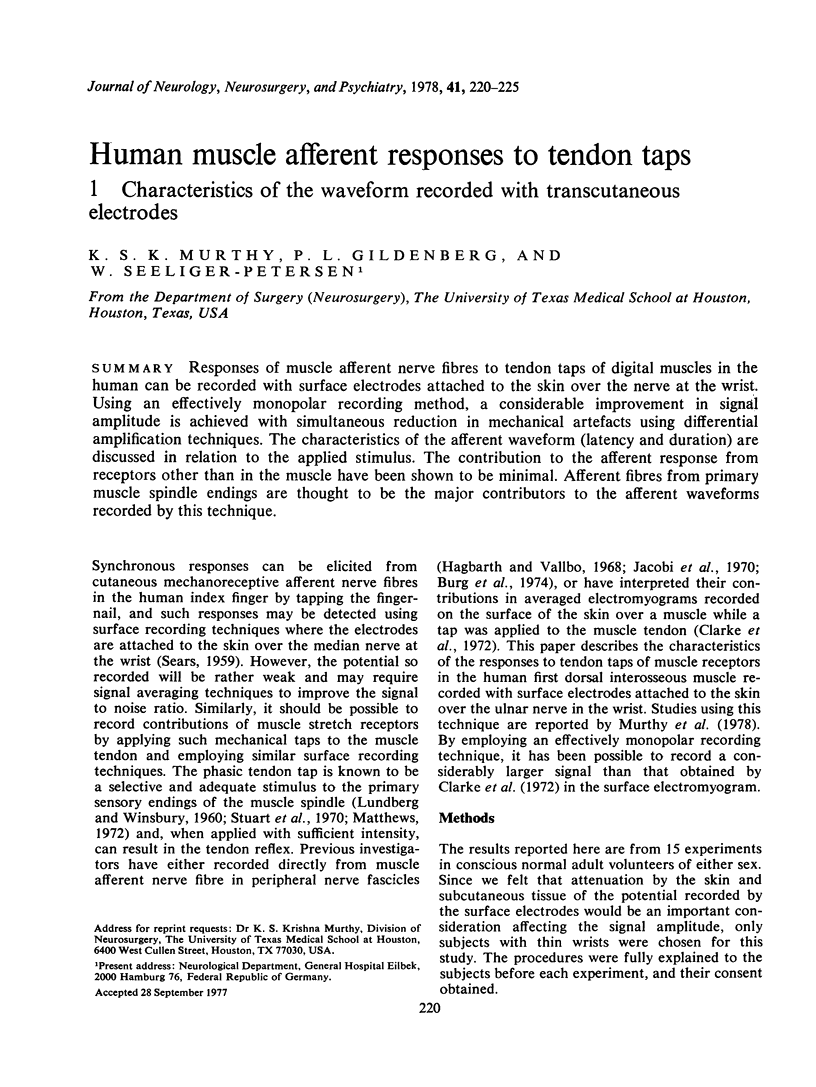
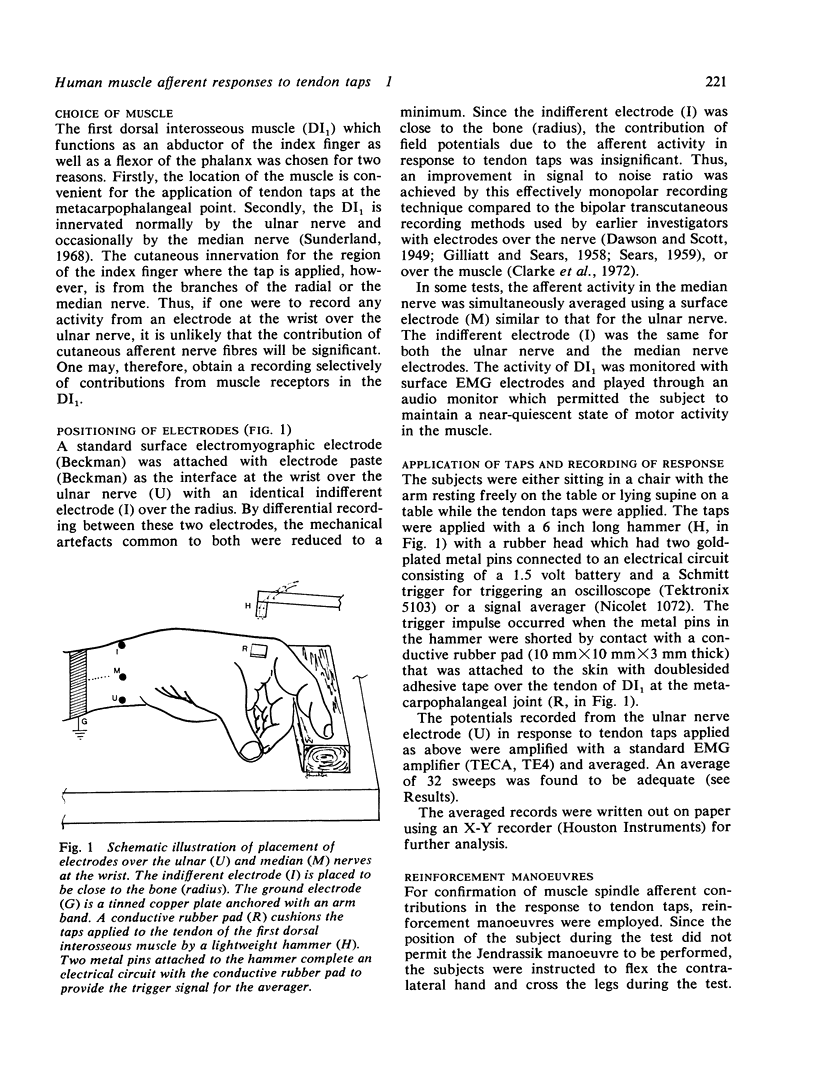
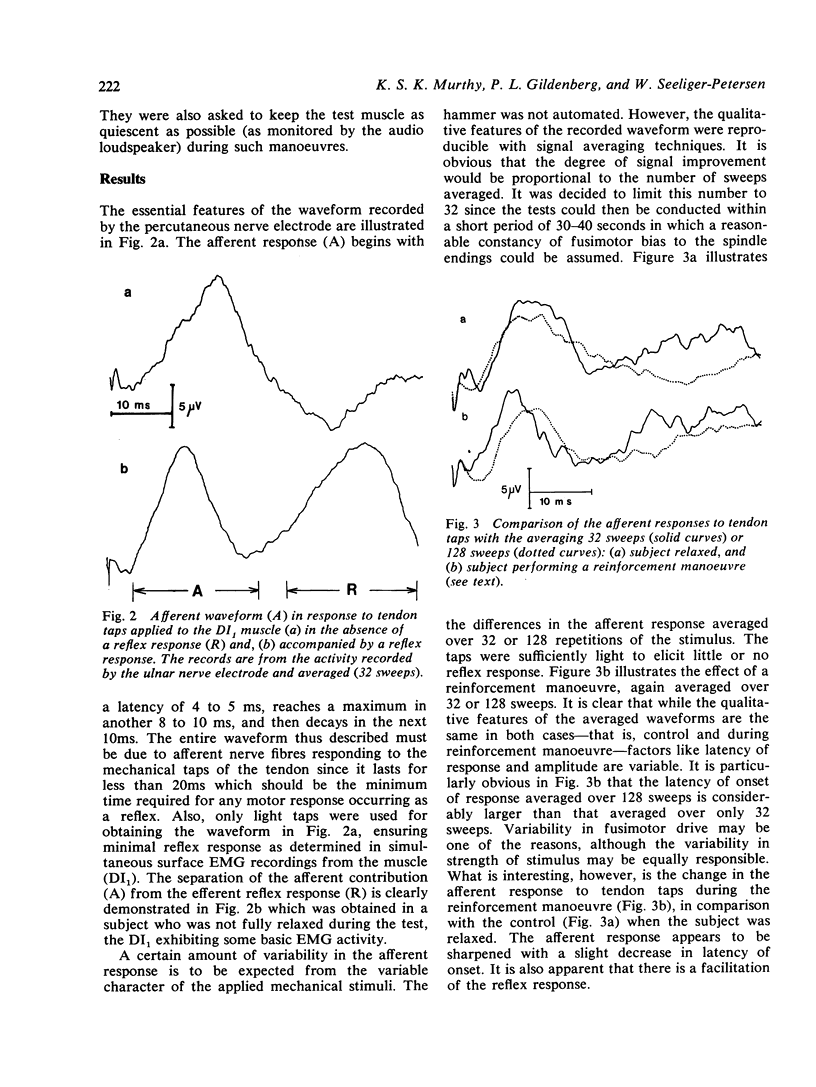
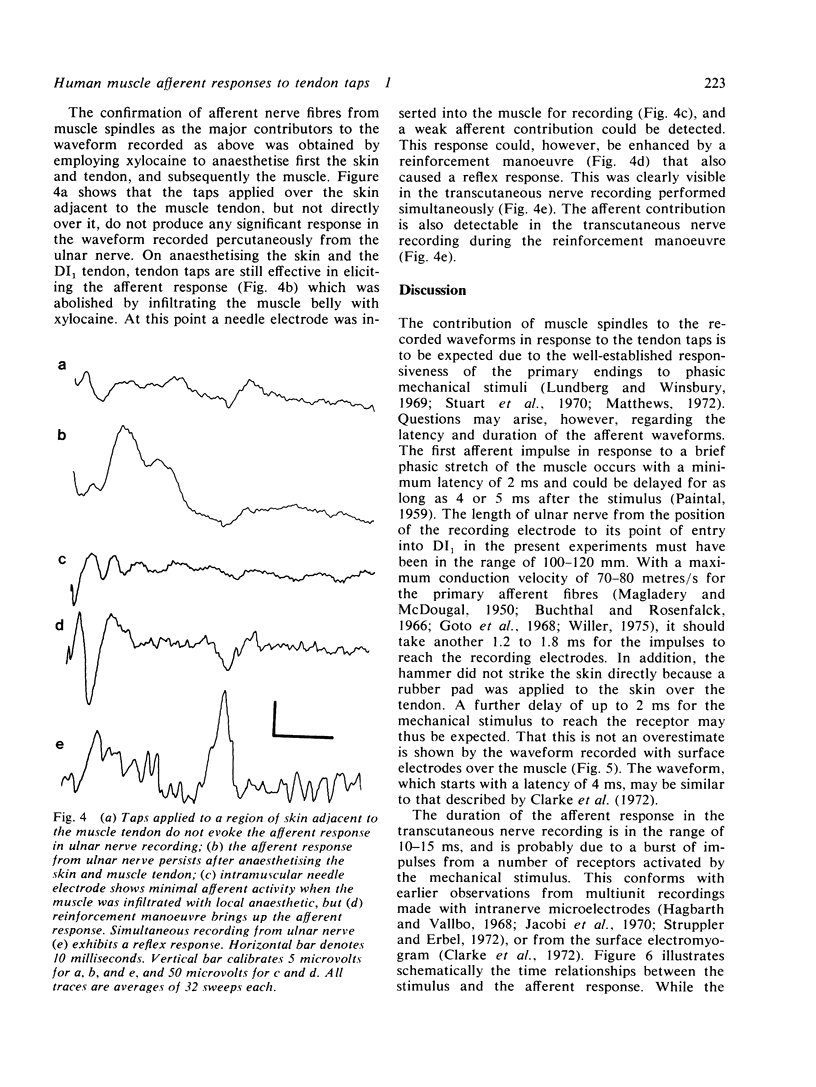
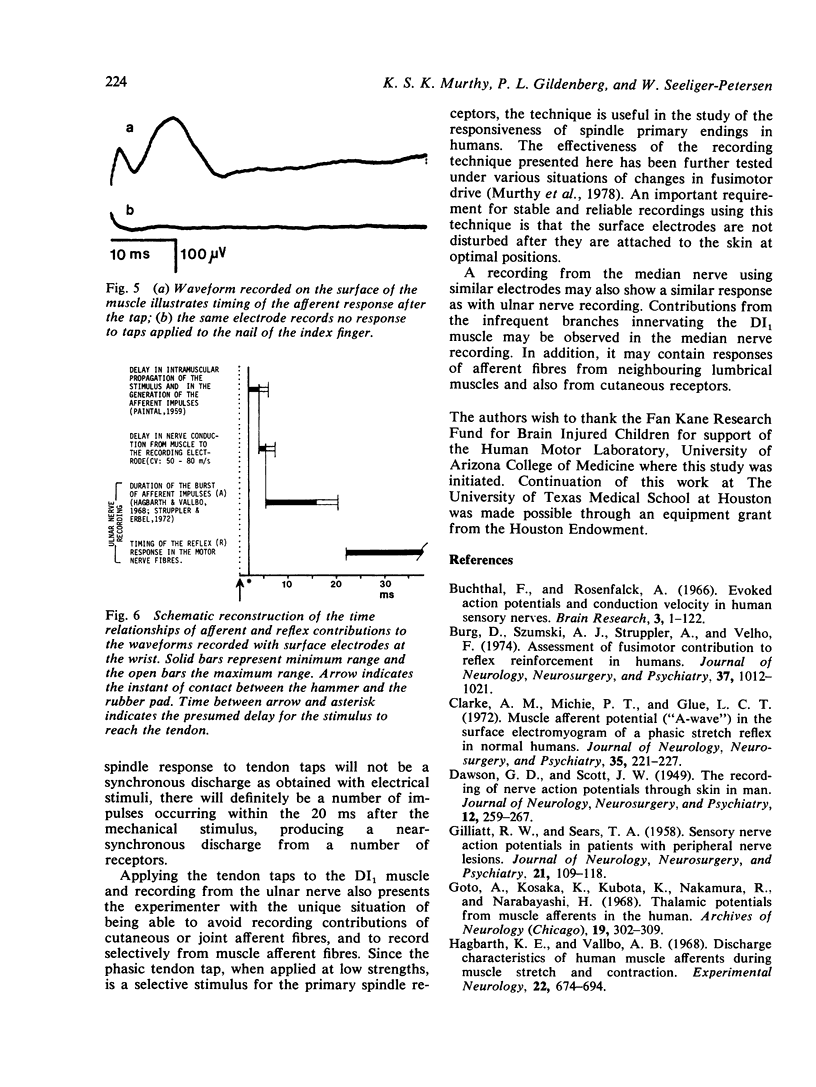
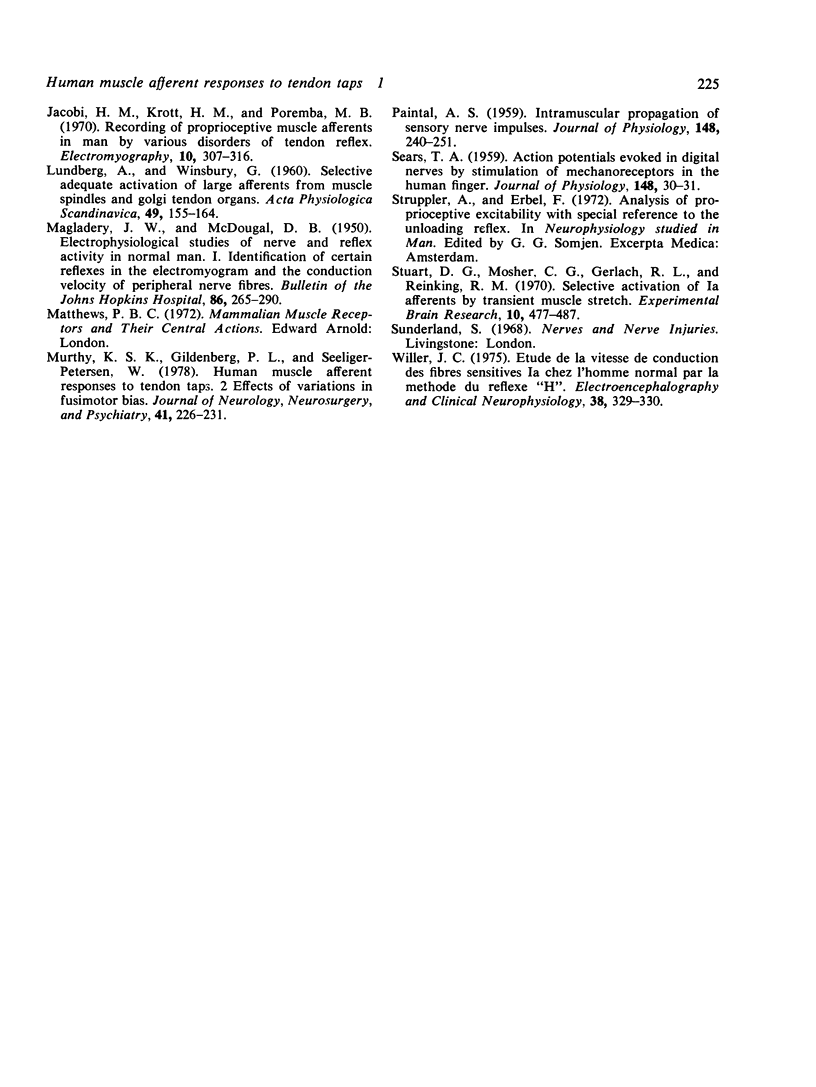
Selected References
These references are in PubMed. This may not be the complete list of references from this article.
- Clarke A. M., Michie P. T., Glue L. C. Muscle afferent potential ('A-wave') in the surface electromyogram of a phasic stretch reflex in normal humans. J Neurol Neurosurg Psychiatry. 1972 Apr;35(2):221–227. doi: 10.1136/jnnp.35.2.221. [DOI] [PMC free article] [PubMed] [Google Scholar]
- DAWSON G. D., SCOTT J. W. The recording of nerve action potentials through skin in man. J Neurol Neurosurg Psychiatry. 1949 Nov;12(4):259–267. doi: 10.1136/jnnp.12.4.259. [DOI] [PMC free article] [PubMed] [Google Scholar]
- GILLIATT R. W., SEARS T. A. Sensory nerve action potentials in patients with peripheral nerve lesions. J Neurol Neurosurg Psychiatry. 1958 May;21(2):109–118. doi: 10.1136/jnnp.21.2.109. [DOI] [PMC free article] [PubMed] [Google Scholar]
- Goto A., Kosaka K., Kubota K., Nakamura R., Narabayashi H. Thalamic potentials from muscle afferents in the human. Arch Neurol. 1968 Sep;19(3):302–309. doi: 10.1001/archneur.1968.00480030080008. [DOI] [PubMed] [Google Scholar]
- Hagbarth K. E., Vallbo A. B. Discharge characteristics of human muscle afferents during muscle stretch and contraction. Exp Neurol. 1968 Dec;22(4):674–694. doi: 10.1016/0014-4886(68)90156-8. [DOI] [PubMed] [Google Scholar]
- Jacobi H. M., Krott H. M., Poremba M. B. Recording of proprioceptive muscle afferents in man by various disorders of tendon reflex. Electromyography. 1970 Sep-Oct;10(3):307–316. [PubMed] [Google Scholar]
- LUNDBERG A., WINSBURY G. Selective adequate activation of large afferents from muscle spindles and Golgi tendon organs. Acta Physiol Scand. 1960 Jul 15;49:155–164. doi: 10.1111/j.1748-1716.1960.tb01939.x. [DOI] [PubMed] [Google Scholar]
- MAGLADERY J. W., McDOUGAL D. B., Jr Electrophysiological studies of nerve and reflex activity in normal man. I. Identification of certain reflexes in the electromyogram and the conduction velocity of peripheral nerve fibers. Bull Johns Hopkins Hosp. 1950 May;86(5):265–290. [PubMed] [Google Scholar]
- Murthy K. S., Gildenberg P. L., Seeliger-Petersen W. Human muscle afferent responses to tendon taps. 2. Effects of variations in fusimotor bias. J Neurol Neurosurg Psychiatry. 1978 Mar;41(3):226–231. doi: 10.1136/jnnp.41.3.226. [DOI] [PMC free article] [PubMed] [Google Scholar]
- PAINTAL A. S. Intramuscular propagation of sensory impulses. J Physiol. 1959 Oct;148:240–251. doi: 10.1113/jphysiol.1959.sp006285. [DOI] [PMC free article] [PubMed] [Google Scholar]
- Stuart D. G., Mosher C. G., Gerlach R. L., Reinking R. M. Selective activation of Ia afferents by transient muscle stretch. Exp Brain Res. 1970 Jun 25;10(5):477–487. doi: 10.1007/BF00234264. [DOI] [PubMed] [Google Scholar]
- Willer J. C. Etude de la vitesse de conduction des fibres sensitives ia chez l'homme normal par la methode du reflexe "h". Electroencephalogr Clin Neurophysiol. 1975 Mar;38(3):329–330. doi: 10.1016/0013-4694(75)90255-2. [DOI] [PubMed] [Google Scholar]


